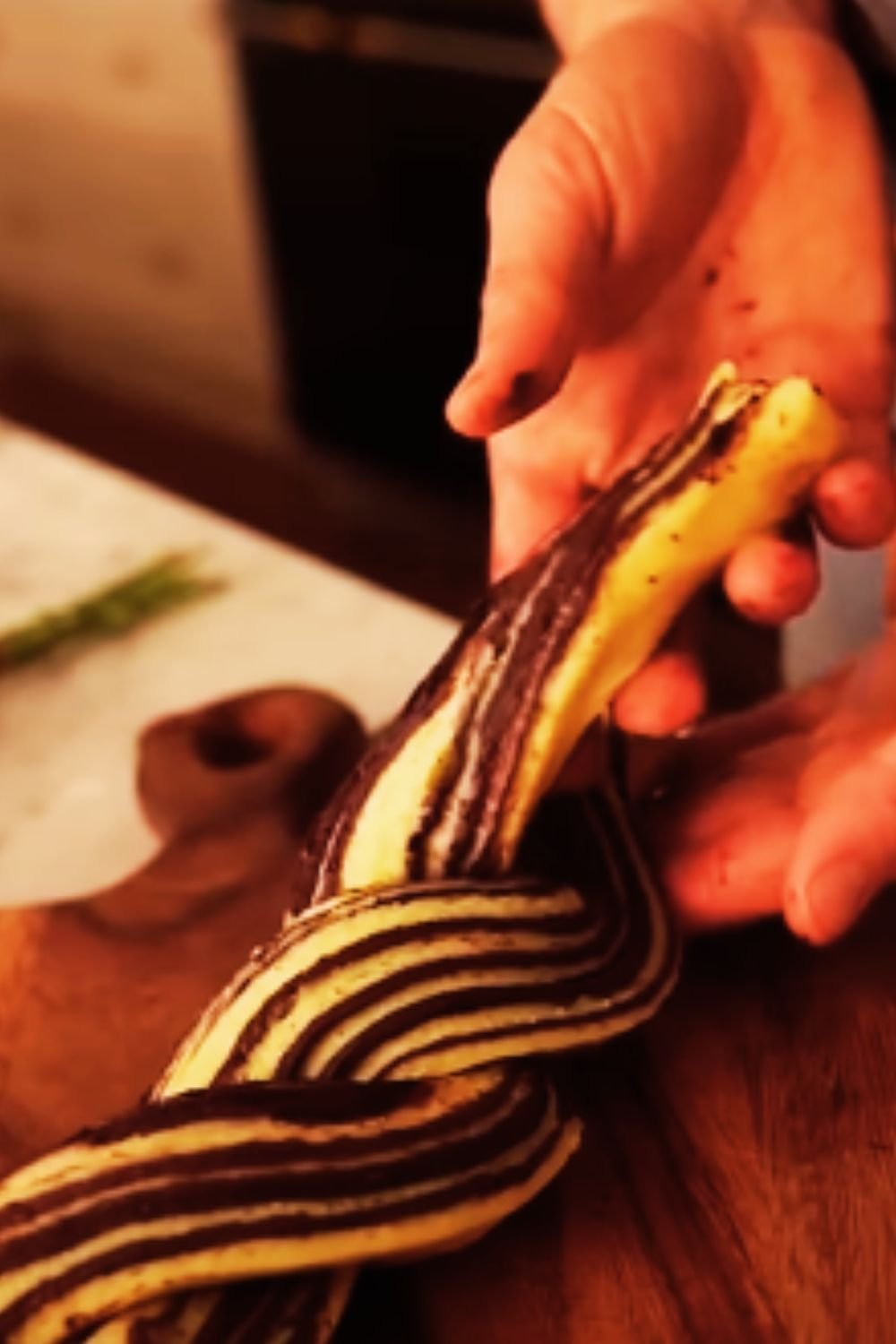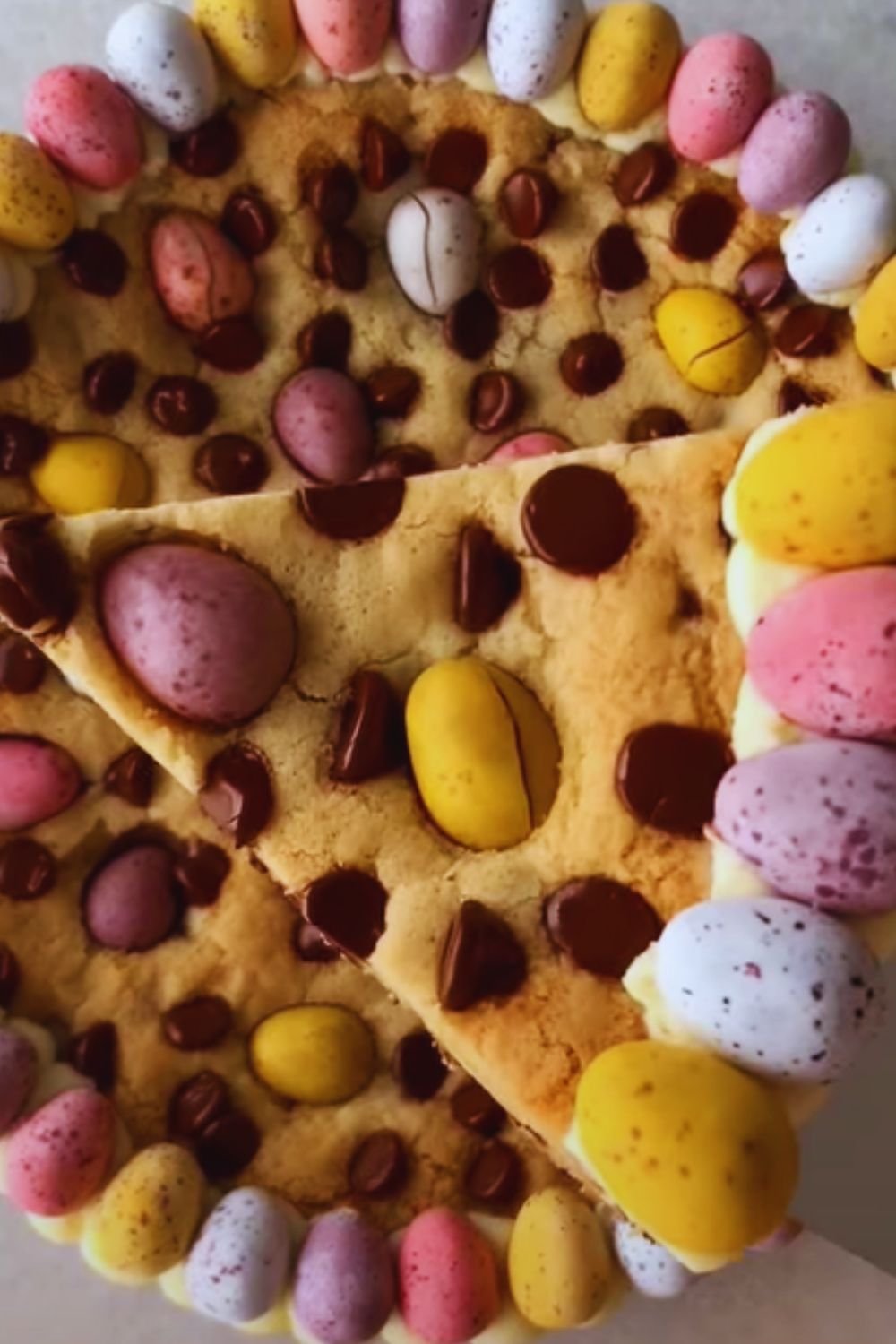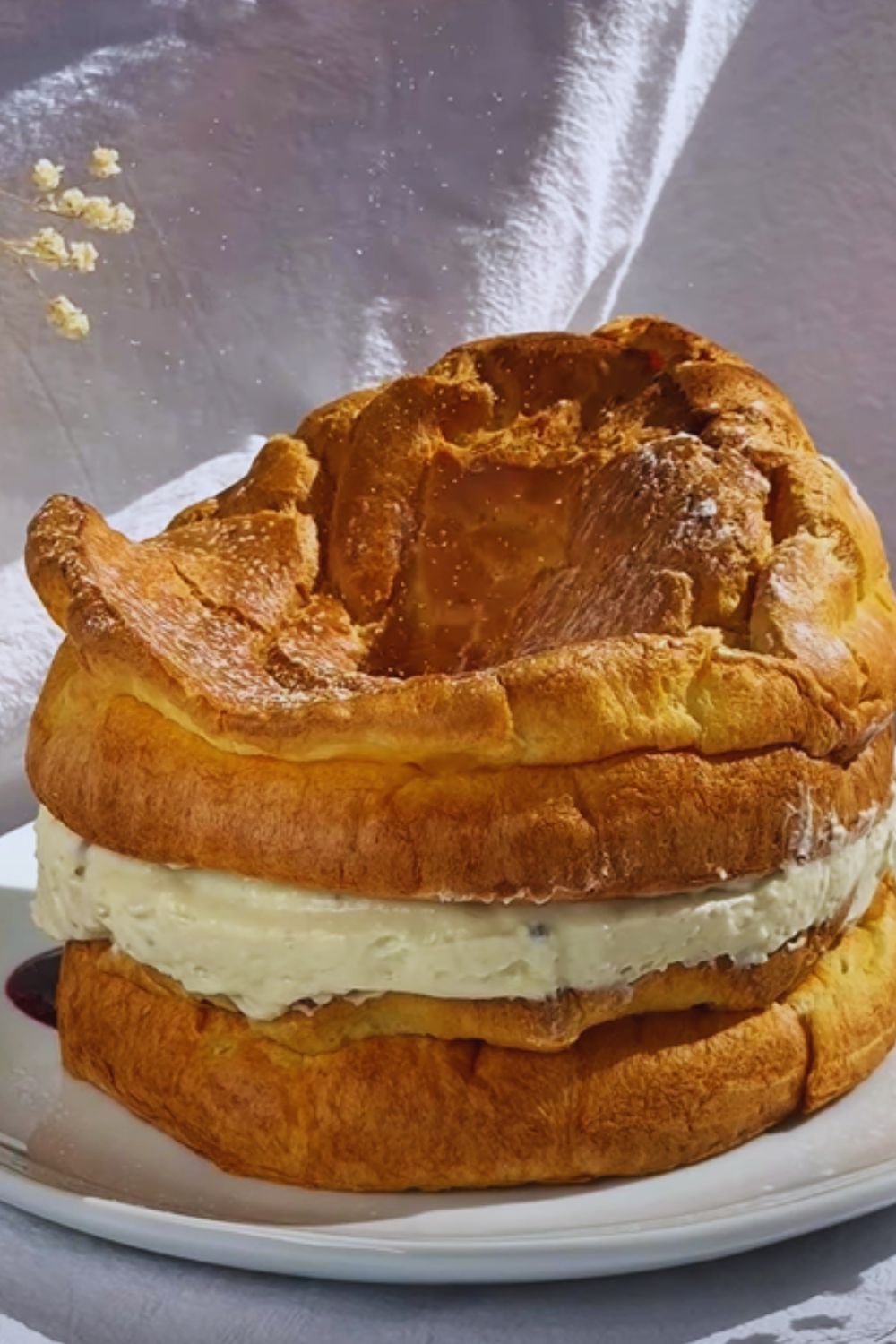There’s something truly magical about the aroma of a freshly baked babka wafting through the house on Easter morning. As someone who’s been perfecting this recipe for years, I can confidently say that this Easter Cream Cheese Babka is the crown jewel of holiday breakfast treats. The combination of rich, buttery dough swirled with tangy cream cheese filling and topped with a crumbly streusel is simply irresistible.
Babka, with its origins in Eastern European Jewish communities, has evolved into countless variations, but this cream cheese version has become my family’s Easter tradition. The addition of cream cheese not only adds a delightful tanginess but also creates pockets of creamy goodness throughout the bread that perfectly balances the sweetness.
The History Behind Babka
Before diving into the recipe, I think it’s worth appreciating the rich history of this delectable bread. Babka, meaning “grandmother” in Polish, was traditionally made by Jewish grandmothers who would twist leftover challah dough with nuts and seeds. The modern version we know today, with chocolate or cinnamon, gained popularity in the late 20th century, especially in New York’s Jewish bakeries.
For Easter celebrations, babka has been adopted and adapted by many cultures, often featuring ingredients that symbolize renewal and celebration. My cream cheese version pays homage to both the Eastern European tradition and the spring-inspired flavors associated with Easter.
Ingredients For Easter Cream Cheese Babka
For the Dough:
- 4 cups all-purpose flour
- 1/3 cup granulated sugar
- 2 1/4 teaspoons active dry yeast (1 standard packet)
- 1 teaspoon salt
- 3 large eggs, room temperature
- 1 large egg yolk (reserve the white for brushing)
- 1/2 cup whole milk, warmed to about 110°F
- 10 tablespoons unsalted butter, softened
- 1 tablespoon vanilla extract
- Zest of 1 lemon
For the Cream Cheese Filling:
- 16 ounces cream cheese, softened
- 1/2 cup granulated sugar
- 1 large egg
- 1 tablespoon lemon juice
- 1 teaspoon vanilla extract
- 3 tablespoons all-purpose flour
- 1/4 teaspoon salt
- 1/4 cup heavy cream
For the Streusel Topping:
- 1/2 cup all-purpose flour
- 1/3 cup granulated sugar
- 1/4 cup brown sugar, packed
- 1/4 teaspoon salt
- 1/4 teaspoon cinnamon
- 6 tablespoons cold unsalted butter, cubed
- 1/2 cup chopped nuts (walnuts or pecans work beautifully)
For the Simple Syrup Glaze:
- 1/3 cup granulated sugar
- 1/3 cup water
- 1 tablespoon honey
- 1 teaspoon vanilla extract
Essential Equipment
Before starting, make sure you have these tools on hand:
- Stand mixer with dough hook attachment
- Large mixing bowl
- Rolling pin
- Two 9×5-inch loaf pans
- Parchment paper
- Pastry brush
- Cooling rack
- Kitchen thermometer (to check milk temperature)
- Plastic wrap
- Clean kitchen towel
The Science Behind Perfect Babka Dough
What separates a good babka from a great one is understanding the science behind the dough. This enriched dough contains a high percentage of fat from eggs and butter, which creates the soft, tender crumb that babka is known for.
The key to success lies in proper temperature control. Having your ingredients at room temperature allows them to incorporate more evenly, creating a smoother dough. When activating the yeast, the milk should be warm (about 110°F) – not hot, which would kill the yeast, and not cold, which would prevent activation.
Additionally, the slow rise in the refrigerator (called retarding) develops complex flavors and makes the dough easier to handle when shaping. This technique is what gives babka its distinctive taste and texture.
Step-by-Step Instructions
Making the Dough
- In the bowl of a stand mixer, combine the flour, sugar, yeast, and salt.
- In a separate bowl, whisk together the eggs, egg yolk, warm milk, vanilla extract, and lemon zest.
- With the mixer on low speed using the dough hook, gradually add the wet ingredients to the dry ingredients.
- Mix until a shaggy dough forms, about 2 minutes.
- Increase speed to medium-low and add the softened butter, 1 tablespoon at a time, waiting until each piece is fully incorporated before adding the next.
- Once all butter is added, increase speed to medium and knead for 8-10 minutes until the dough is smooth, elastic, and pulls away from the sides of the bowl.
- Transfer the dough to a lightly oiled bowl, cover with plastic wrap, and let rise in a warm place for 1-2 hours, or until doubled in size.
- After the first rise, punch down the dough, cover again, and refrigerate for at least 4 hours or overnight. This cold fermentation is crucial for flavor development.
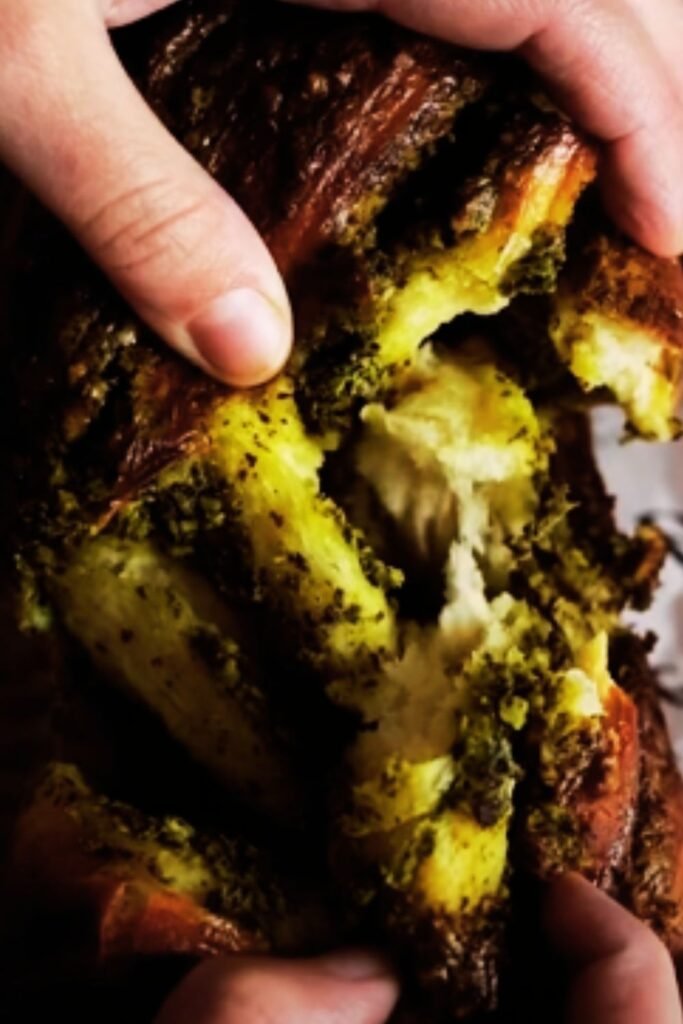
Preparing the Cream Cheese Filling
- In a large bowl, beat the softened cream cheese and sugar until smooth and fluffy, about 2 minutes.
- Add the egg, lemon juice, and vanilla, beating until well combined.
- Mix in the flour and salt until just incorporated.
- Gradually add the heavy cream, mixing until smooth and spreadable.
- Cover and refrigerate until ready to use.
Making the Streusel Topping
- In a medium bowl, whisk together the flour, granulated sugar, brown sugar, salt, and cinnamon.
- Add the cold butter cubes and use your fingers or a pastry cutter to work the mixture until it resembles coarse crumbs with some pea-sized pieces.
- Mix in the chopped nuts and refrigerate until ready to use.
Assembling the Babka
- Line two 9×5-inch loaf pans with parchment paper, leaving overhang on the long sides for easy removal.
- Remove the dough from the refrigerator and divide it in half.
- On a lightly floured surface, roll out one portion of dough into a rectangle approximately 12×16 inches.
- Spread half of the cream cheese filling evenly over the dough, leaving a 1/2-inch border around the edges.
- Starting from the long edge, tightly roll the dough into a log.
- Using a sharp knife, cut the log lengthwise down the center, creating two long pieces with exposed layers.
- Twist the two pieces around each other, keeping the cut sides facing up to expose the filling.
- Transfer the twisted dough to one of the prepared loaf pans.
- Repeat with the remaining dough and filling for the second loaf.
- Cover the loaves with a clean kitchen towel and let rise in a warm place for 1-1.5 hours, until puffy and expanded.
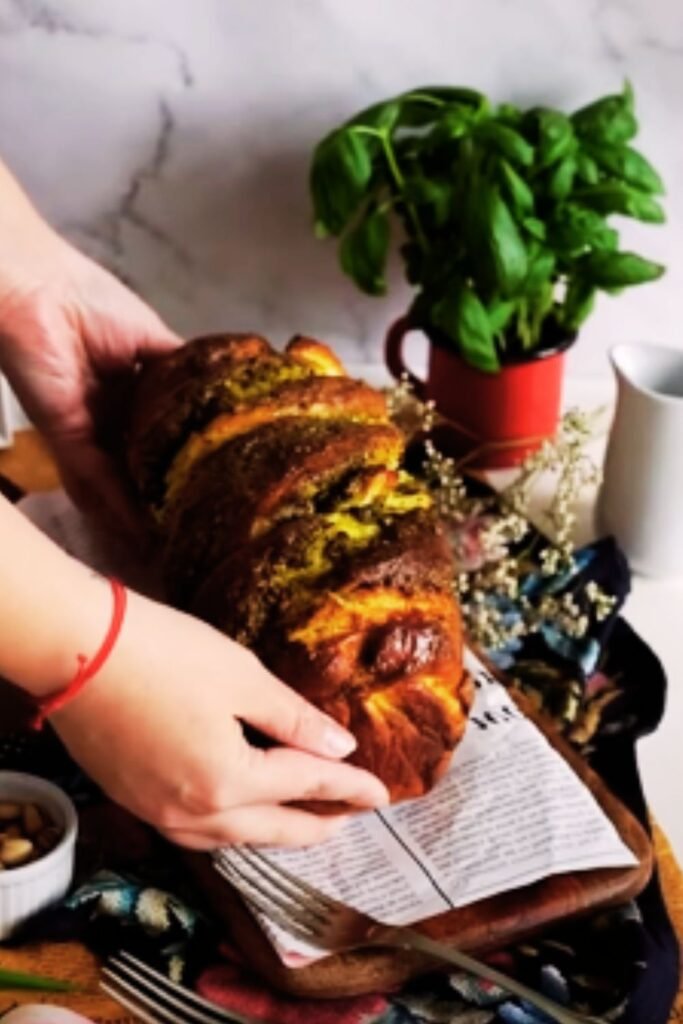
Baking and Finishing
- Preheat the oven to 350°F (175°C).
- Lightly brush the tops of the risen loaves with the reserved egg white.
- Sprinkle the streusel topping generously over both loaves.
- Bake for 45-55 minutes, until golden brown and a thermometer inserted into the center registers at least 190°F (88°C).
- While the babkas are baking, prepare the simple syrup by combining sugar, water, and honey in a small saucepan. Bring to a simmer, stirring until sugar dissolves. Remove from heat, stir in vanilla, and let cool slightly.
- When the babkas come out of the oven, immediately brush the tops with the simple syrup.
- Let cool in the pans for 15 minutes, then use the parchment overhang to lift them out and transfer to a cooling rack to cool completely.
Troubleshooting Common Babka Problems
| Issue | Possible Cause | Solution |
|---|---|---|
| Dough not rising | Yeast is old or milk was too hot/cold | Use fresh yeast and ensure milk is around 110°F |
| Filling leaking out | Filling too thin or dough rolled too thin | Chill filling longer or roll dough slightly thicker |
| Doughy center | Underbaked | Bake longer at a slightly lower temperature with foil cover if browning too fast |
| Dense texture | Insufficient kneading or rising time | Knead until dough passes the windowpane test and allow full rising time |
| Dry babka | Overbaked or insufficient syrup | Monitor baking time carefully and apply syrup while still hot |
| Uneven swirls | Loose rolling or uneven cutting | Roll dough tightly and use a very sharp knife for clean cuts |
| Collapsed loaf | Overproofed before baking | Watch rising time carefully, especially in warm weather |
| Filling too runny | Not enough flour in filling | Add 1-2 extra tablespoons of flour to thicken |
Variations and Add-ins for Cream Cheese Babka
The beauty of this babka recipe is its versatility. Here are some variations I’ve experimented with over the years:
Seasonal Fruit Additions:
- Spring: Add 1/2 cup of diced strawberries or blueberries to the filling
- Summer: Fold in 1/3 cup of peach or apricot preserves
- Fall: Incorporate 1/4 cup of pumpkin puree and extra cinnamon
- Winter: Mix in 1/4 cup of cranberry sauce or orange zest
Flavor Enhancements:
- Chocolate Marble: Swirl 1/2 cup of melted chocolate into the cream cheese filling
- Citrus Burst: Add additional lemon or orange zest to both dough and filling
- Spiced: Add 1 teaspoon of cinnamon, 1/4 teaspoon of nutmeg, and a pinch of cardamom to the dough
- Almond Joy: Mix in 1/2 teaspoon of almond extract and top with sliced almonds
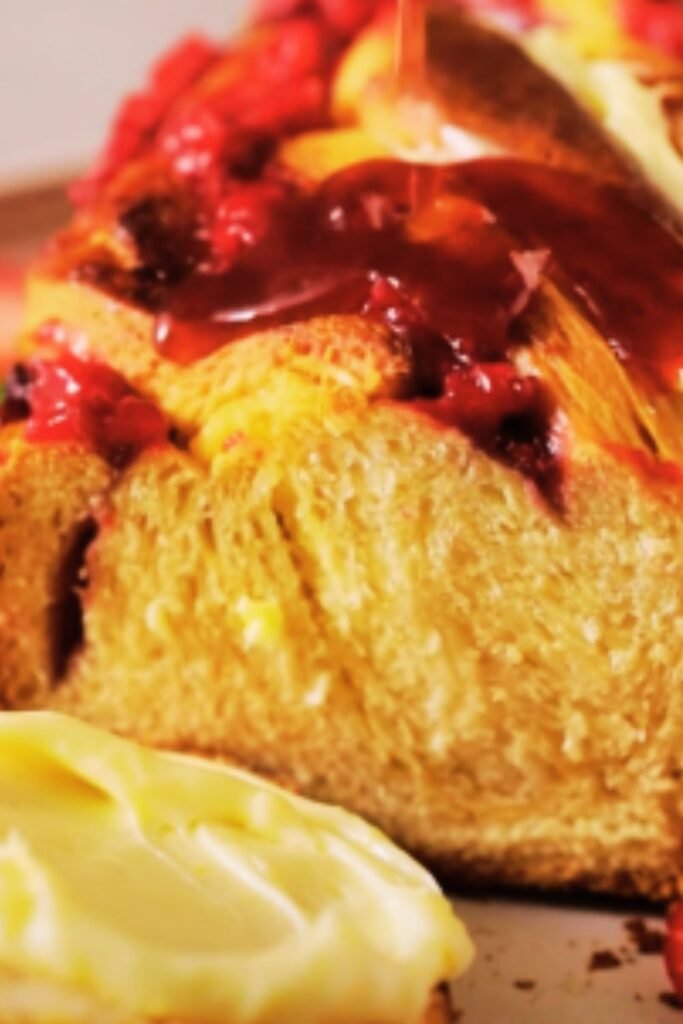
Make-Ahead and Storage Tips
One of the reasons I love this recipe is how well it fits into a busy holiday schedule. Here’s how I manage the timing:
Make-Ahead Options:
- Dough: Can be refrigerated for up to 2 days before shaping
- Filling: Can be made up to 3 days in advance and stored in an airtight container in the refrigerator
- Streusel: Can be prepared up to 1 week ahead and stored in the refrigerator or 1 month in the freezer
- Fully baked babka: Freezes beautifully for up to 3 months when wrapped tightly
Storage Guidelines:
| Storage Method | Time Frame | Notes |
|---|---|---|
| Room temperature | 2-3 days | Store in airtight container or wrapped in plastic wrap |
| Refrigerator | 1 week | Wrap tightly; bring to room temperature before serving |
| Freezer (sliced) | 1 month | Wrap individual slices; thaw at room temperature |
| Freezer (whole loaf) | 3 months | Double-wrap in plastic and foil; thaw overnight in refrigerator |
Reheating Recommendations:
- Individual slices: 10-15 seconds in the microwave or 5 minutes in a 300°F oven
- Whole loaf: 15-20 minutes in a 300°F oven, covered with foil
Nutritional Information
While this is definitely a special occasion treat, it’s helpful to know what you’re consuming. Here’s the approximate nutritional breakdown per slice (assuming 12 slices per loaf):
| Nutrient | Amount per Slice |
|---|---|
| Calories | 380 |
| Total Fat | 21g |
| Saturated Fat | 12g |
| Cholesterol | 95mg |
| Sodium | 230mg |
| Total Carbohydrates | 42g |
| Dietary Fiber | 1g |
| Sugars | 20g |
| Protein | 7g |
Serving Suggestions
I find that Easter brunch should feel special but not overly complicated. Here’s how I serve my Easter Cream Cheese Babka:
Easter Brunch Menu Pairings:
- Fresh fruit salad with mint and honey
- Savory egg casserole or quiche
- Smoked salmon with capers and cream cheese
- Fresh-squeezed orange juice or a sparkling water bar with fruit
- Hot coffee or tea service
Presentation Ideas:
- Serve on a decorative Easter-themed platter
- Dust with powdered sugar just before serving for a “snow-capped” effect
- Garnish with edible flowers like pansies or violets for a spring touch
- Create a dramatic table centerpiece by placing a whole babka on a cake stand surrounded by fresh flowers

Cultural Significance and Traditions
What I love most about this Easter Cream Cheese Babka is how it connects us to traditions across cultures and generations. In many Eastern European countries, enriched breads symbolize prosperity and celebration, making them perfect for Easter festivities.
In my own family, we’ve developed a tradition of baking the babka on Good Friday, allowing the flavors to develop overnight, and then enjoying it after Easter morning services. The rich, indulgent nature of the bread feels especially meaningful after the fasting period of Lent.
Some families I know incorporate symbolic decorations on top of their Easter babkas, such as braided crosses, flowers, or birds made from dough. Others tint portions of the streusel with natural food coloring to create a pastel effect reminiscent of Easter eggs.
Whatever traditions you choose to incorporate, this babka can become a cherished part of your own Easter celebration, creating memories and comfort for years to come.
Frequently Asked Questions
Q: Can I make this recipe without a stand mixer? Yes, you can mix the dough by hand, but be prepared for an arm workout! Start by mixing with a wooden spoon, then knead by hand for about 15 minutes until smooth and elastic. The butter incorporation will be more challenging but totally doable with patience.
Q: My kitchen is cold. How can I help the dough rise properly? Try creating a warm environment by preheating your oven to its lowest setting for just a minute or two, then turning it off. Place the covered dough inside this slightly warmed (but definitely not hot) oven. Alternatively, place the dough on top of a refrigerator or near (not on) a heating vent.
Q: Can I use low-fat cream cheese? While it will work in a pinch, I strongly recommend using full-fat cream cheese for the best texture and flavor. Low-fat versions contain more moisture and stabilizers that can affect the filling consistency.
Q: My babka seems to be browning too quickly in the oven. What should I do? Simply tent the top with aluminum foil once it reaches your desired color. This will allow the interior to continue cooking without the top becoming too dark.
Q: Can I substitute the nuts in the streusel for those with allergies? Absolutely! You can omit the nuts entirely or replace them with sunflower seeds, pumpkin seeds, or even rolled oats for a similar texture.
Q: Why do you brush the babka with simple syrup? The simple syrup adds moisture, sweetness, and gives the babka its characteristic glossy top. It’s a traditional technique that helps preserve freshness and enhances flavor. Don’t skip this step!
Q: My dough seems very sticky. Should I add more flour? Enriched doughs like babka are naturally stickier than regular bread dough due to the high fat content. Resist the urge to add too much additional flour, which can make the final product dense. Instead, chill the dough if it becomes too difficult to handle.
Q: Can I make mini babkas in muffin tins? Yes! This recipe can make approximately 24 mini babkas. Reduce the baking time to about 20-25 minutes and check for doneness with a toothpick.
Final Thoughts: Embracing Imperfection
As I’ve made this Easter Cream Cheese Babka over the years, I’ve come to appreciate that each loaf has its own unique character. Some have more dramatic swirls, others have filling that bubbles up unexpectedly, creating caramelized edges. These “imperfections” are what make homemade babka special and different from mass-produced versions.
So as you embark on your own babka-making journey, embrace the process. Take photos of your creation, note what works well for your specific kitchen environment, and don’t be afraid to make the recipe your own. The joy of baking traditions like this one comes not just from the delicious end result, but from the memories created while making it and sharing it with those you love.
Whether this becomes part of your annual Easter celebration or a year-round treat, I hope this cream cheese babka brings as much joy to your table as it has to mine!
